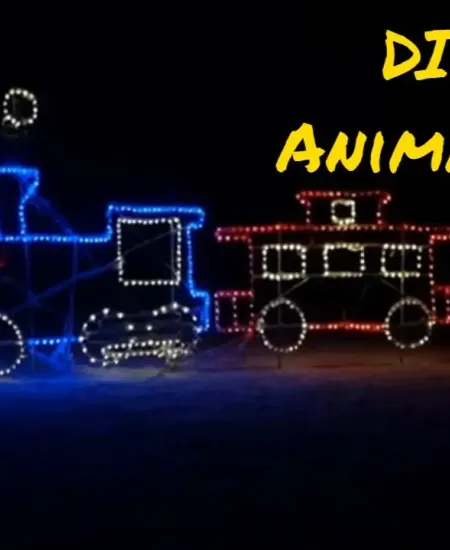Bringing Your Outdoor Light Displays to Life: A Guide to Adding Motion
Every year, as the chill of December rolls in, I find myself wrestling with boxes of Christmas lights and decorations. There's something magical about transforming a familiar space into a twinkling winter wonderland. However, after several years of sticking to static displays, I decided it was time to step up my game. How could I make my outdoor light display not just shine, but dazzle with movement? If you're pondering the same thing, you've come to the right place! Let's dive into the enchanting world of adding motion to outdoor light displays, whether it's for Christmas or any festive occasion.
The Basics of Motion in Light Displays
Before we start engineering our dynamic light show, let's talk about why motion can make such a profound impact. Motion adds an element of surprise and delight to light displays. It catches the eye and creates dynamic visual interest. Not to mention, it can tell a story or guide the viewer's eye through a landscape of festive cheer.
For example, I remember witnessing my first animated light display at a neighborhood competition. Lights mimicked the fall of snow, and reindeer appeared to run across the lawn. It was mesmerizing and set the display leagues apart from more static setups. That's when I knew I needed to bring that dynamic spirit to my own display.
Tools and Tech for Animated Lighting
Getting started with adding motion involves exploring some tech options that are much more accessible nowadays. Here are the main players:
- Controller Systems: These are the brains of the operation. Controllers like Light-O-Rama and Arduino allow you to synchronize lights to music, create timers, and manage complex sequences. (lightorama.com) (instructables.com)
- Software: Corresponding software will enable you to design your light show with precision. You can determine when, where, and how lights will turn on and off, fade, twinkle, or chase.
- Mechanical Relays: For simpler motion effects, mechanical relays can turn sections of your lights on and off. These work great for creating a blinking effect.
- Motorized Decorations: Adding rotating stands or motorized inflatables can bring movement to figures and larger elements of your display.
My first foray into animated lighting involved a basic controller system that I used to synchronize lights to a few of my favorite Christmas tunes. Setting it up was a fun weekend project, though I'll admit, there was a fair share of trial and error in the beginning. My advice? Start small and expand as you get more comfortable with the technology.
Creative Ideas to Enhance Your Display with Motion
Knowing the tools and technology is one thing, but coming up with creative ideas to bring them to life is where the real magic happens. Here are some inspirations that can be adapted to any scale:
- Synchronized Music Shows: Sync your lights to holiday music. This can be anything from a classical Christmas carol to more upbeat seasonal music. Each segment of your display can come to life with different parts of the tune. (instructables.com)
- Interactive Displays: Integrate sensors that change the lighting when someone passes by or interacts with the display. Imagine lights that brighten as guests approach or pathways that light up under their footsteps. (reddit.com)
- Narrative Scenes: Use motion to tell a story. Sequence your lights to create scenes where Santa lands on the roof, elves load the sleigh, or reindeer take off into the sky.
- Random Sparkles: Mimic the twinkle of stars or a light frost using random blinking patterns across a section of lights. This can give an elegant and soft moving effect that's quite mesmerizing.
One year, I set up a Santa’s workshop scene in my garden, using a motion sensor to light up the workshop windows and start a soft jingle as people walked past. It was a hit with the neighborhood kids (and adults, too!) and brought a lovely interactive layer to the display.
Practical Tips for First-Timers
While diving into motion lights is exciting, there are some practical considerations to keep in mind to ensure your display is not only stunning but safe and efficient:
- Power Management: Animated and large displays can draw a lot of power. Ensure your electrical setup is capable of handling the load safely, and consider using LED lights to minimize consumption.
- Weatherproofing: All outdoor setups need to be weatherproof. This includes your light fixtures, wires, and especially any controller systems or relays.
- Start Early: Don’t wait until the last minute to test your display. Start setting up and testing early in the season to troubleshoot issues.
- Community Courtesy: While it’s tempting to go all out, consider your neighbors—especially with music-synced displays. Ensure your display is enjoyable, not a nuisance.
My personal takeaway from venturing into animated lighting? It’s a delightful challenge. The first year felt a bit overwhelming, but seeing the faces of friends and family as they watched the display come to life with motion made all the effort worthwhile.
Concluding Thoughts: Share the Joy of Movement
Adding motion to your outdoor light displays can transform a static decoration into a story and an experience. Whether it's the simple blinking of lights, a full-blown musical synchronization, or automated figures that wave and turn, motion adds a new dimension of enjoyment to your festive setup.
So, why not challenge yourself this coming holiday season? Start small, maybe with a single song synchronization or a few motorized elements, and see where your creativity takes you. It’s about building something magical that brings joy—and isn’t that what the holiday spirit is all about?
Remember, the most important part of holiday decorations is to have fun and spread cheer. Happy decorating!
Subscribe to our email newsletter and unlock access to members-only content and exclusive updates.

Comments